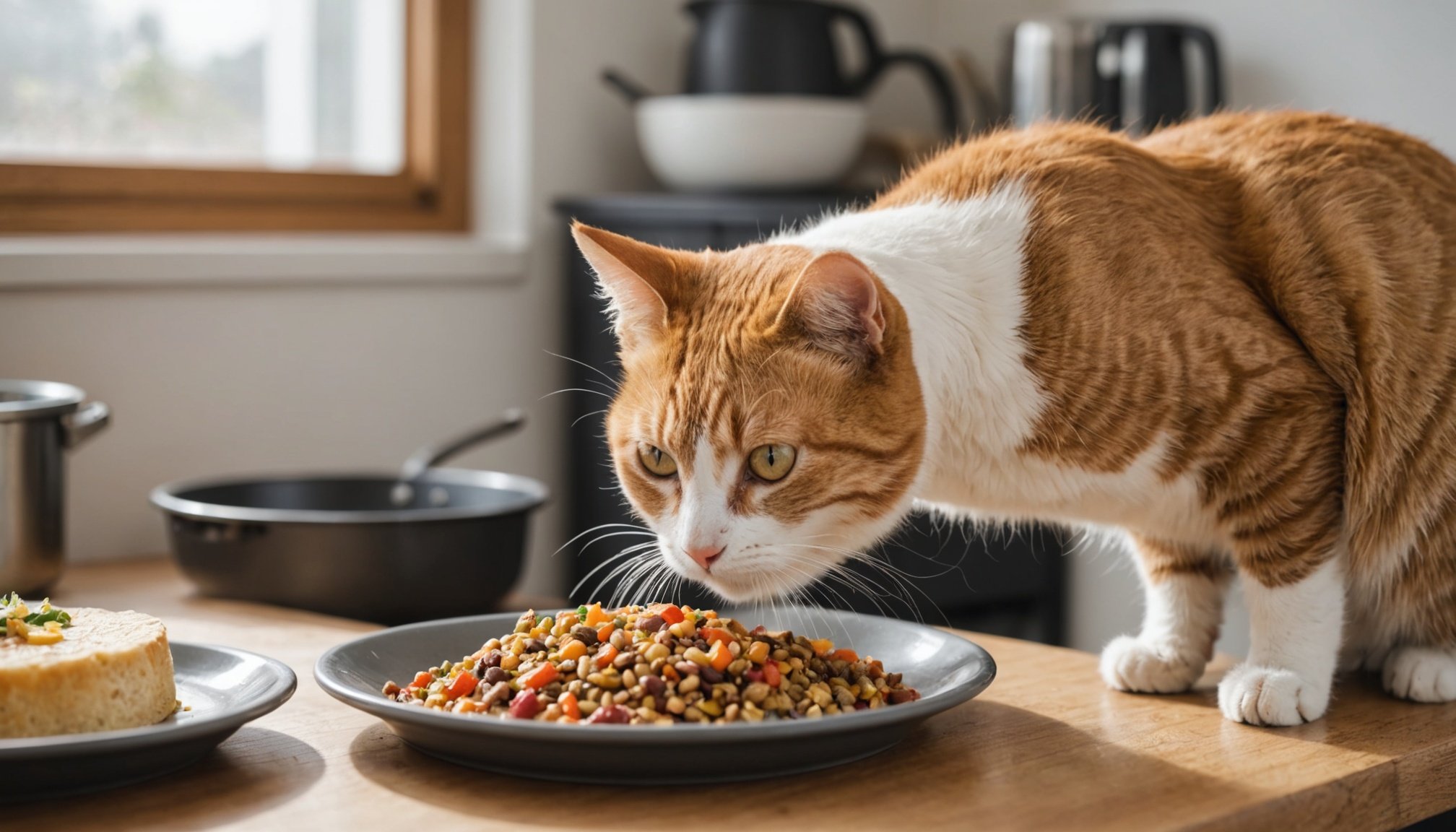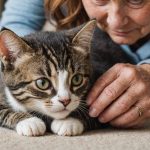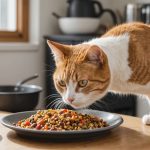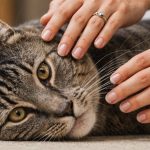Understanding Social Eating Anxiety in Cats
Social eating anxiety in cats is a common yet overlooked issue affecting many feline companions. This form of anxiety manifests during mealtimes and can greatly impact your cat’s eating behavior. Symptoms often include reluctance to eat in the presence of other animals, or hesitance to consume food in specific environments. Those displaying these behaviors may also exhibit signs of stress such as pacing, heightened alertness, or retreating to secluded spaces.
There are various common triggers for social eating anxiety. Shared feeding spaces, for instance, can cause tension. Cats are territorial creatures, and sharing their environment with other animals can lead to feelings of insecurity. Competition for food further exacerbates anxiety during feeding times, sometimes resulting in aggression or refusal to eat.
Sujet a lire : Stress-Free Strategies to Help Your Cat Embrace Nail Trimming!
The overall environment plays a crucial role in shaping a cat’s eating behaviors. Experimental feeding sessions in calm, quiet locations can be beneficial. If the feeding area is not perceived as safe, a cat may struggle with complete meal consumption. This habit can lead to nutritional deficits over time. Understanding and alleviating these stressors is essential in promoting healthier, more relaxed eating habits for your feline friend.
Creating the Ideal Feeding Environment
Creating the right feeding environment is crucial for enhancing cat comfort and significantly reducing stress during meal times.
A lire en complément : Strategies for Adjusting Your Cat”s Nocturnal Habits to Fit Your Lifestyle
First and foremost, choose a location that exudes tranquility and safety. A quiet corner away from high-traffic areas in the home can work wonders. This setting allows cats to eat at ease, free from disturbances. Avoid areas near loud appliances or noisy passageways, as these could increase your feline’s anxiety levels.
When considering the setup, ensure that the feeding zone is tailored to your cat’s needs. Place the food and water bowls a short distance apart to mimic natural conditions. This spatial arrangement not only promotes better eating habits but also contributes to stress reduction. An elevated feeding platform can further enhance the environment, especially for older cats needing a more comfortable posture during meals.
Incorporating calming elements into the feeding space can make a significant difference. Pheromones diffusers are effective in creating a soothing atmosphere. Additionally, playing soft, soothing music might also contribute to a serene meal experience.
Overall, designing an environment that caters to your cat’s comfort helps minimize stress, ensuring a pleasant mealtime experience every day.
Feeding Strategies to Alleviate Anxiety
Feeding strategies play a crucial role in managing and alleviating anxiety in cats. Implementing effective feeding techniques can contribute to a calmer, more relaxed feline. Understanding the dynamics between scheduled feeding and free feeding is essential to determine what works best for your cat’s mental well-being.
Scheduled Feeding vs. Free Feeding
Scheduled feeding offers numerous benefits, particularly in controlling food intake and regulating anxiety levels. By adhering to a fixed feeding timetable, cats can develop predictable routines, reducing stress. However, this requires commitment to consistently provide meals at specified times, which might not suit every pet owner’s lifestyle.
Conversely, free feeding allows cats to eat at their leisure, which can work for less anxious cats. However, it might lead to overeating and weight concerns. To implement a controlled feeding schedule, establish mealtime routines and monitor your cat’s response over time, adjusting as necessary to achieve optimal anxiety reduction.
Types of Food and Feeding Tools
Selecting the appropriate cat meals is vital in managing anxiety. Focus on food texture and flavor to cater to your cat’s preferences; some find softer textures or specific flavors comforting. Comfortable feeding bowls placed in a quiet environment prevent associating meal times with stress. Additionally, incorporating puzzle feeders can mentally engage cats, turning feeding time into a playful challenge that can alleviate anxiety by promoting natural hunting instincts.
Professional Insights and Recommendations
When it comes to managing pet-related challenges, veterinarian advice and insights from animal behaviorists are invaluable. These experts provide practical tips that can make a real difference. For instance, veterinarians might recommend specific dietary changes to help with anxiety, while animal behaviorists might suggest behavioral exercises to improve a pet’s wellbeing.
Experts emphasize the importance of tailoring interventions to each animal’s unique needs. Case studies have shown the effectiveness of personalized approaches. In one case, a dog with severe separation anxiety improved significantly after consulting a behaviorist and implementing a structured routine. Such interventions address not only the symptoms but also the root causes of behavioral issues.
For persistent anxiety or behavioral challenges, consulting professionals is crucial. Expert tips suggest that even minor tweaks can lead to long-lasting improvements. Before any intervention, a comprehensive assessment by a qualified veterinarian or behaviorist ensures that all potential underlying issues are considered.
Seeking professional guidance can be daunting, but it is a vital step in ensuring the long-term health and happiness of pets. By prioritizing expert advice and personalized strategies, pet owners can cultivate a more harmonious relationship with their animal companions.
Observing and Addressing Common Behaviors
Cat behavior observation is essential, especially around feeding times. It’s crucial to notice any behavioral changes such as pacing, vocalization, or refusal to eat, indicating stress or discomfort. When these signs are present, observing the specific triggers can lead to better feeding solutions.
If your cat shows distress during mealtime, consider adjustments based on behavioral observations. For instance, changing the location of the food bowl to a quieter area can alleviate stress caused by excessive noise. Similarly, if your cat often seems skittish, it might help to use a less intimidating, open feeding dish to boost comfort levels.
Continuous assessment is key. After making changes, monitor your pet’s reactions closely. Are they eating more calmly? Have their behavioral changes decreased? Modifying practices isn’t a one-time effort; it’s an ongoing process to ensure your cat dines with ease.
Implement gradual changes and observe their impact to develop feeding solutions tailored to your cat’s needs. Remember, a stress-free mealtime contributes significantly to overall wellbeing. This attentive approach can prevent further issues, ensuring your pet maintains both a healthy diet and a peaceful feeding environment.











